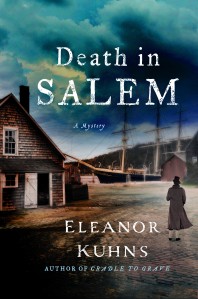So there were already some tunnels in Salem linking the fine houses, the docks, the brothels and the counting houses. Many of the men who had made their fortunes running privateers became Senators, a Secretary of State, and other wealthy and influential men. As Salem shipping imported cargo from Russia, India, the East Indies, and finally China, Salem became not only the sixth largest city in the U.S. but the wealthiest. Custom duties to a large degree supported the Federal Government.
To collect these duties during the time Rees visited Salem, the merchant ships were required to tie up about three miles out. The customs inspector would row out to inspect the cargo and assess the duties. Do I believe that this prevented smuggling? Not a chance. I’m sure a number of shippers found ways to circumvent these efforts and used the already existing tunnels to transport goods to the counting houses out of sight of the prying eyes.
In 1801 Thomas Jefferson became the third president of the United States and began, not only enforcing the already existing laws on the books but put in new strict laws on the collection of duties. The harbor was silting up and New Bedford, Boston, and other ports would soon become more prominent. Elias Haskell Derby Jr. found it difficult to maintain his lifestyle. He embarked on a building program in the Commons, and put in tunnels to the wharves, the counting houses and the banks. But isn’t 1801 is several years after Death in Salem? Yes, that is so but a number of the houses listed as having tunnels connected to them were built before 1797.
I made a leap and decided to claim there were many tunnels prior to the Derby scion in 1801. The tunnels would have been helpful during the Revolutionary War and the British incursion, especially when it would have been important to move goods without British knowledge.
Finally, my excuse for this bit of slippery history is: Well, the story is fiction and I think the tunnels could have been there and been used as I described.

